Dell EMC PowerEdge R940 review: A beast of a server
The R940 offers a mighty 4-socket Xeon Scalable solution in a surprisingly small package
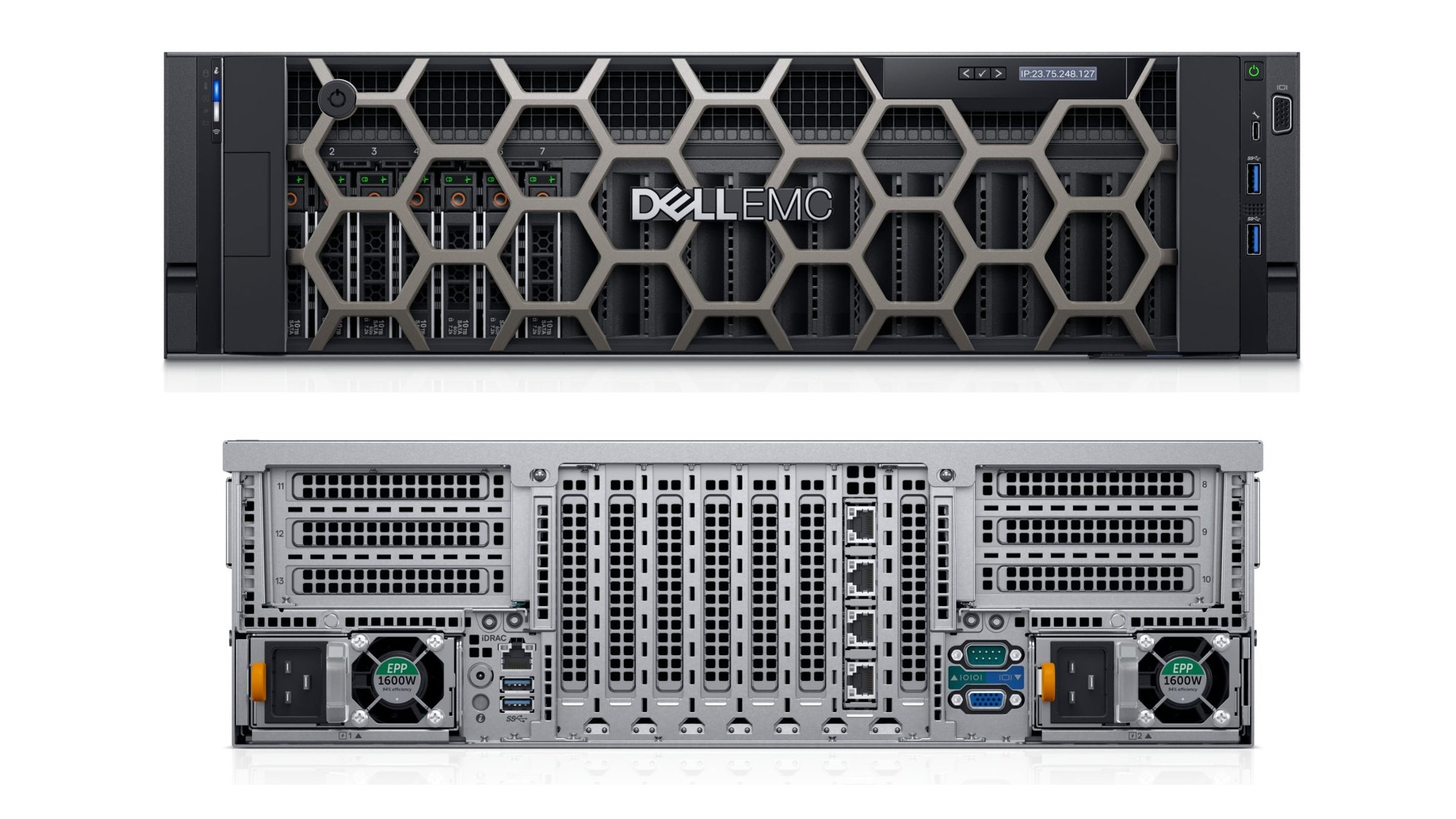

The PowerEdge R940 is a hugely powerful 4P Xeon Scalable rack server with masses of room to grow - data centres looking for a big boost in capacity and performance will love it
-
+
Impressive 4P Xeon Scalable density; Compact 3U chassis; Big expansion potential, Versatile design; Great value; iDRAC9 management
-
-
OpenManage Enterprise still in development

Sitting at the pinnacle of Dell EMC's PowerEdge 14G server family, the R940 delivers a powerful Xeon Scalable package in a compact 3U rack chassis. It's the first 4-socket (4P) system in the 14G lineup and has the thermal capacity to handle every Xeon Scalable model right up to the high-end 28-core chips.
Targeting a broad range of mission critical workloads, it offers an impressive expansion potential with support for 6TB of DDR4 memory, 12 high-performance NVDIMM-N modules and 13 PCI-Express (PCIe) expansion slots. Storage looks good too, as the chassis has room for 24 SFF drives and is geared up for PCIe NVMe SSDs.
It builds hugely on its predecessor, the 13G R930, by offering 50% more NVMe drives plus a third more I/O capabilities and, being 1U shorter, has a higher rack density. Dell EMC claims the R940 offers 27% more cores - although it must have based this on an R930 with four 22-core E7-8800 v4 Xeons and not with the 24-core models, which only yield a 17% increase.
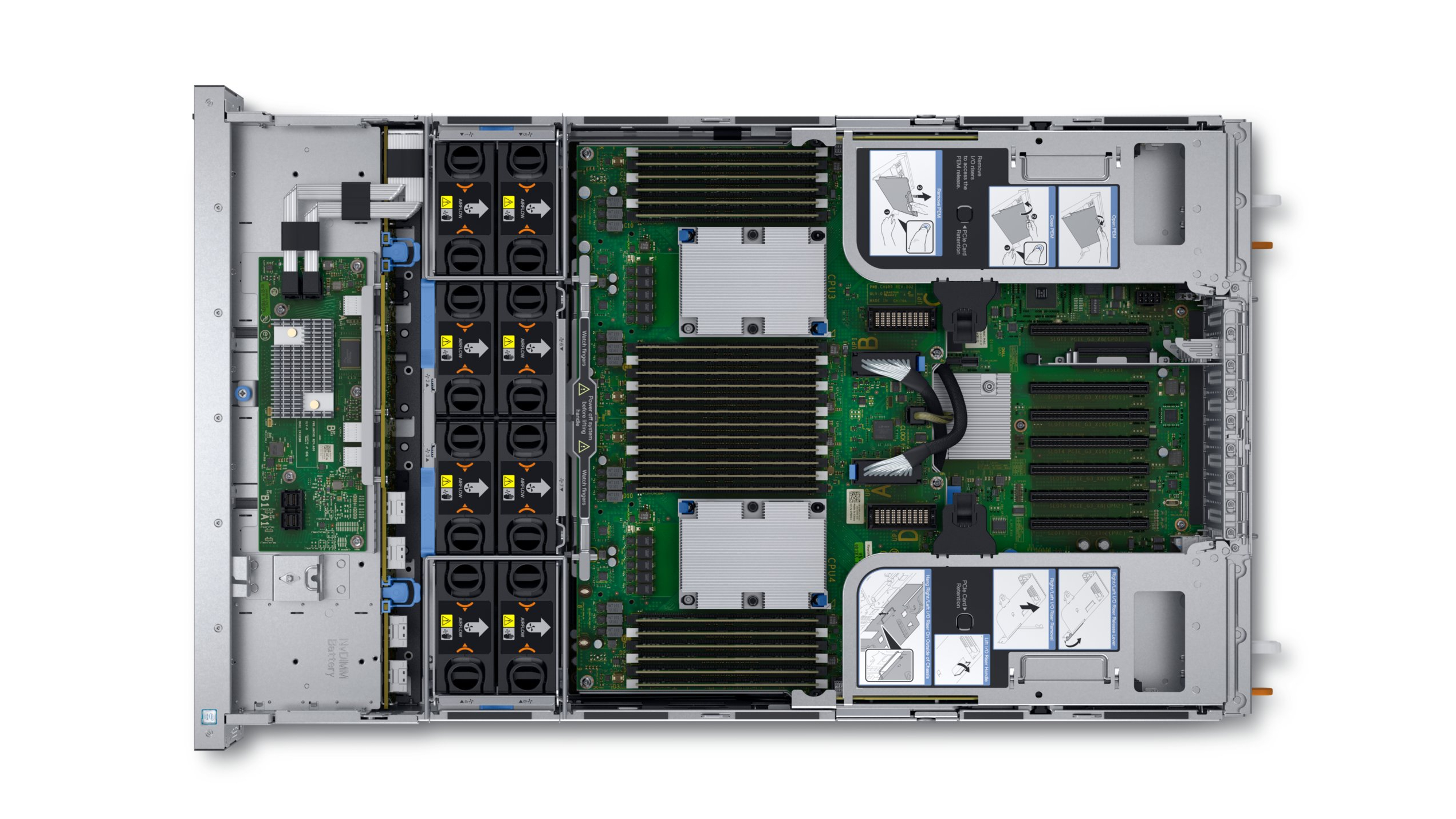
Dell EMC PowerEdge R940 review: Hardware and specs
Our review system delivers a great starter package, with the price including quad 3.6GHz Xeon Gold 5122 CPUs and 32GB of DDR4 memory. These 4-core CPUs represent an affordable entry point into the Xeon Gold family and offer very high per-core performance and support for 2,400MHz DDR4 memory.
Internally, the R940 presents a clever design. Squeezing quad CPUs and 48 DIMM sockets into a 3U chassis is no mean feat and Dell has achieved this with a full-width mezzanine card, or PEM (processor expansion module).
Dell offers the R940 as a 2P option and in this system, the main motherboard in the chassis base has two CPU sockets and 24 DIMMs slots. Our 4P system has the PEM sitting on top which provides the other two CPU sockets plus remaining DIMM slots.
In practise it works very well; after removing the 3-slot PCIe riser cards on each side, the PEM can be swung back on its hinges to provide full access to the mainboard below. Enterprises can start with a 2P system and upgrade to 4P when the time is right by ordering the PEM kit (CPUs and memory are ordered separately).
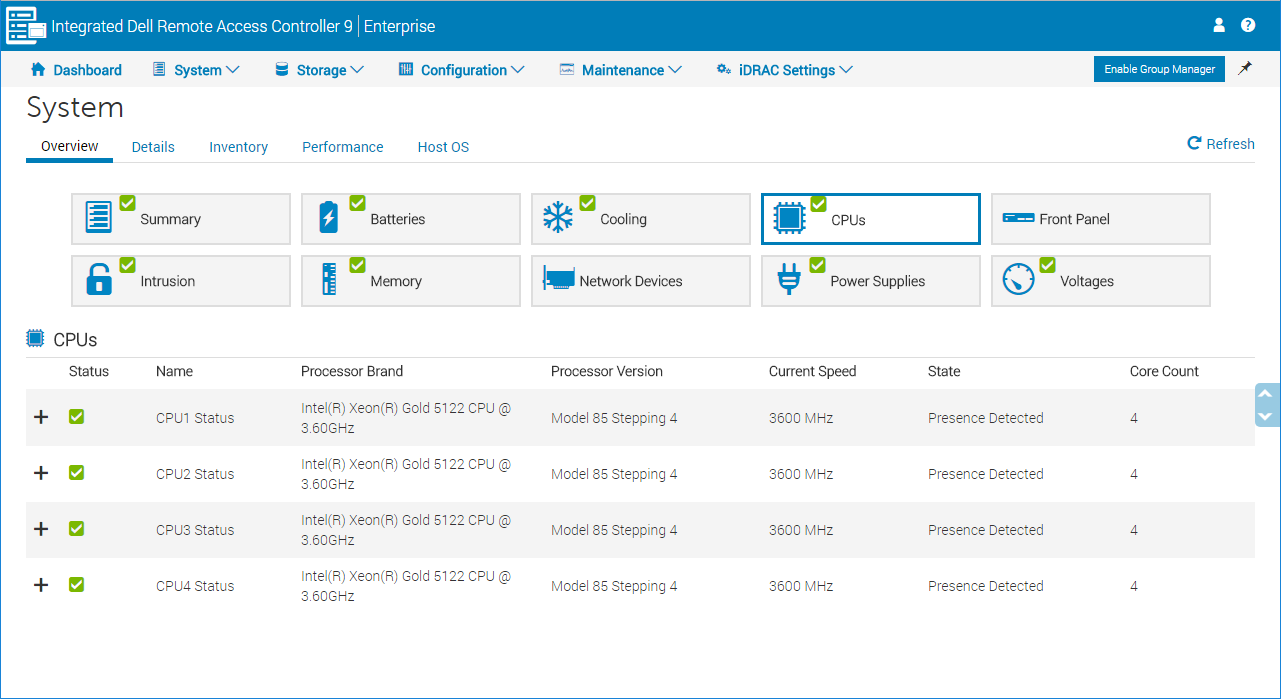
Dell EMC PowerEdge R940 review: Storage options
Storage features begin with an 8-drive passive backplane which is only available on the 2P model, whereas our 4P system includes the 24-drive active backplane and SAS3 expander board. The backplane also incorporates six dual-port PCIe connectors which enable drive bays 1-4 and 17-24 for NVMe SSDs.
RAID choices start with the embedded PERC S140 chip supporting SATA drives plus stripes, mirrors and RAID5 arrays. Dell EMC offers plenty of PERC 10 RAID controllers and we have the top-dog H740P card with 8GB of NVRAM cache and battery backup.
You can save on storage space with Dell EMC's BOSS (boot optimized storage solution) card which negates the need to put your OS on a hard disk. This bootable PCIe card has dual M.2 SATA SSD slots, supports mirroring and costs around 670 with two 240GB sticks.
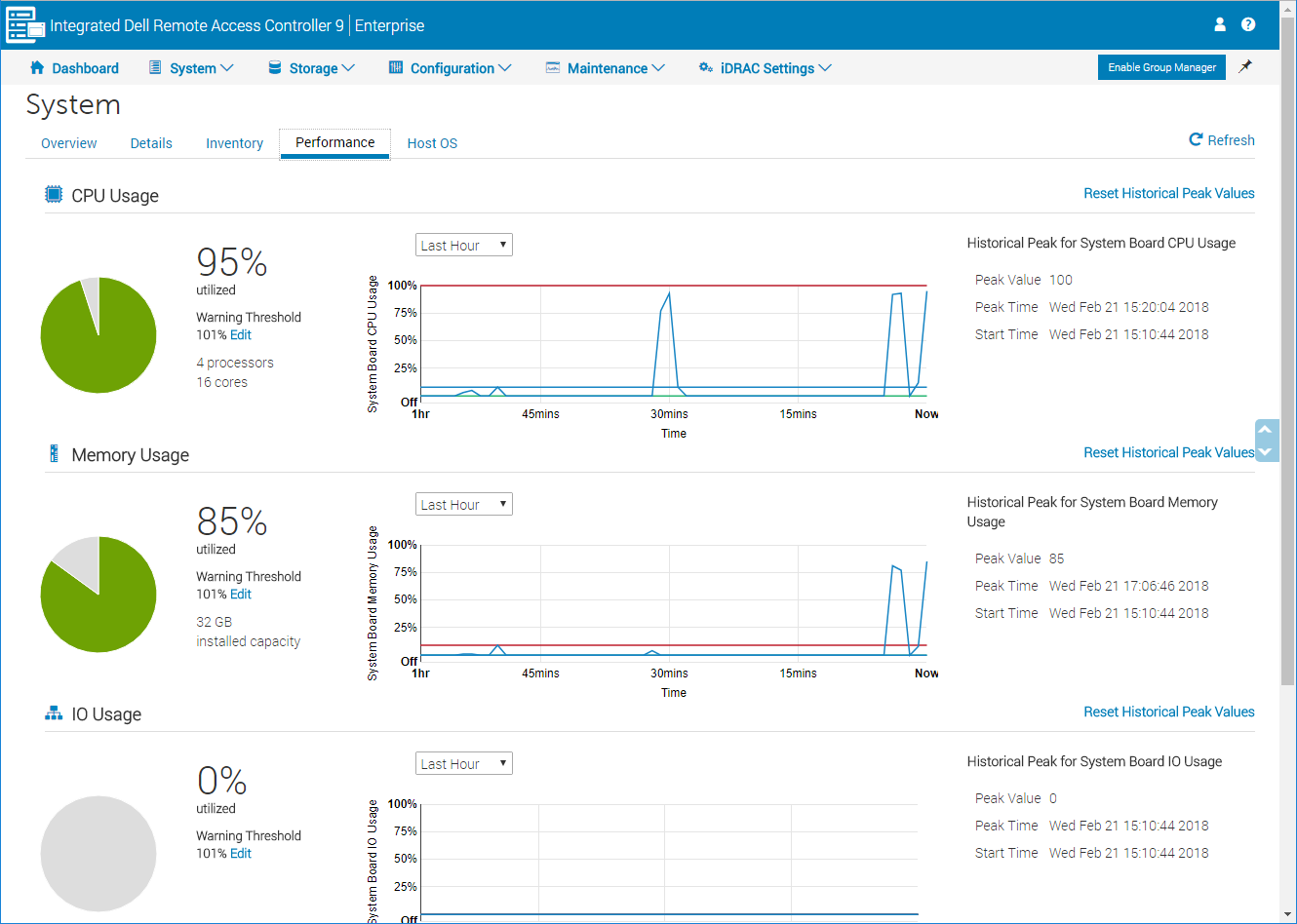
Dell EMC PowerEdge R940 review: Expansion, power and cooling
The PCIe slot arrangement is also smart as 2P systems enable the seven slots on the mainboard while in 4P systems, the extra pair of 3-slot risers plug in directly to the PEM. Our H740P RAID card was installed in the first mainboard slot and next door is a dedicated riser slot for Dell EMC's network daughter cards (NDCs).
We have the Broadcom dual 10GbE SFP+/dual 1GbE NDC option which has its own onboard heat-pipes and radiator assembly. Other options include dual 10GBaseT/1GbE, quad 10GbE and dual 25GbE NDCs.
Power is handled by dual 1100W Platinum hot-plug PSUs and for fully-loaded systems, you have 1600W, 2000W and 2400W options. The low 105W TDP of the Gold 5122 CPUs was reflected in our power tests, with the server drawing 145W in idle and peaking at 510W with all CPUs under maximum load.
Cooling has been redesigned and is handled by two banks of four fan modules in front of the motherboard/PEM. Each module is hot-pluggable and for easier access to the drive backplane, the entire assembly can be easily released and removed.
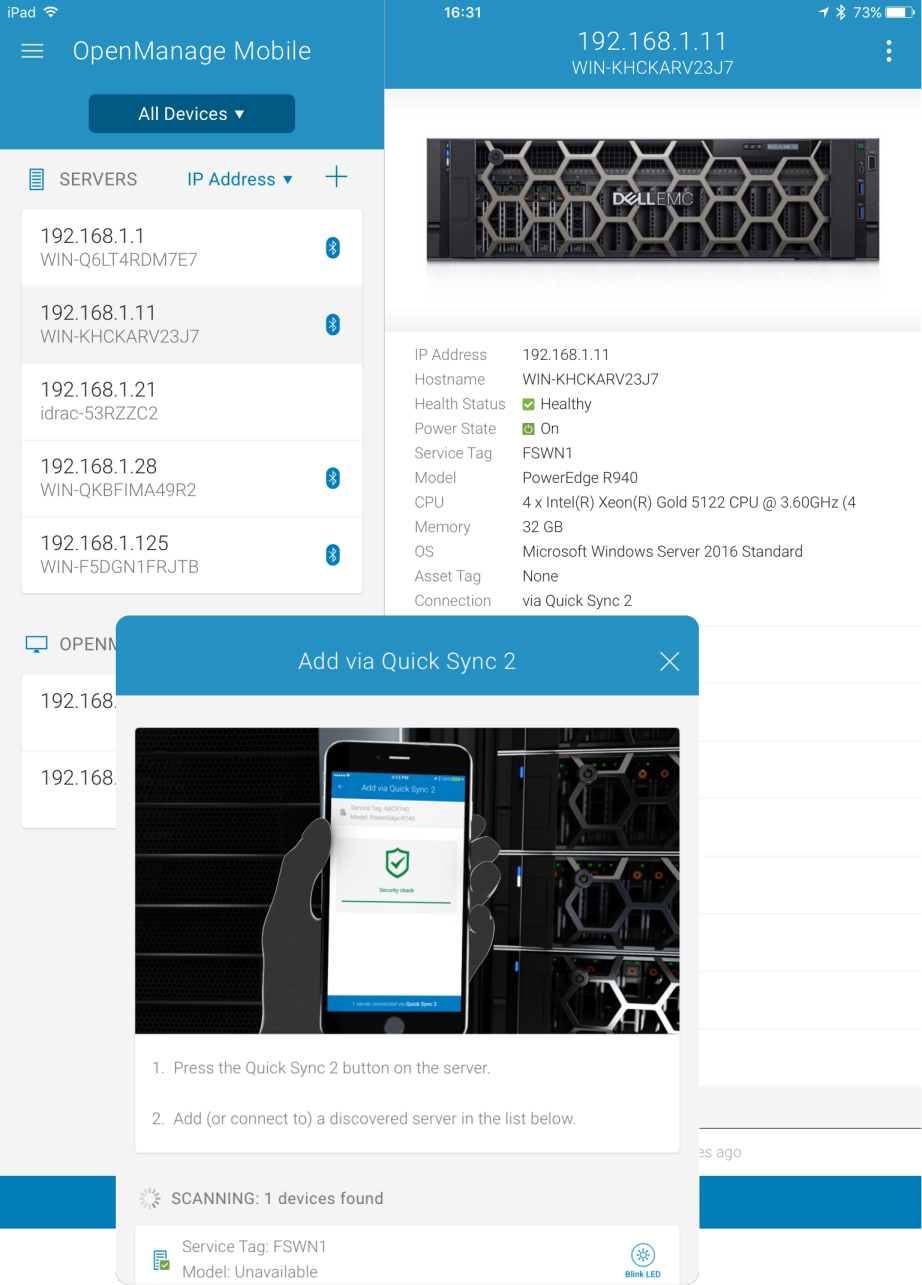
Dell EMC PowerEdge R940 review: Management
The R940 sports Dell EMC's latest iDRAC9 controller which presents a classy HTML5-based web interface. This offers a veritable treasure trove of information on every critical component, a full system inventory, multiple performance graphs and direct configuration access to the PERC RAID controllers.
The iDRAC9 has a sharp focus on security with a System Lockdown mode stopping users making any configuration changes. It also delivers full supply chain security as firmware packages are cryptographically signed.
We're also impressed with the Quick Sync 2 module which is located in the server's left rack mount ear. Pressing the button under the system ID LED activated Bluetooth allowing us to connect our iPad directly to the server via the OpenManage Mobile (OMM) iOS app for on-the-spot diagnostics.
The OpenManage Essentials software is now looking a tad dated and will soon be replaced by OpenManage Enterprise. Although still in development, we loaded a Hyper-V VM of an early technical release and were impressed with the level of management features it provides.

Dell EMC PowerEdge R940 review: Verdict
The PowerEdge R940 delivers a fine combination of Xeon Scalable density and unprecedented expansion potential making it a great choice for handling heavy duty mission-critical apps. Squeezing this amount of raw processing power into a 3U chassis is quite an achievement and we were impressed with the server's clever internal design which allows it to scale easily with demand.
Verdict
The PowerEdge R940 is a hugely powerful 4P Xeon Scalable rack server with masses of room to grow - data centres looking for a big boost in capacity and performance will love it
As reviewed:
Get the ITPro daily newsletter
Sign up today and you will receive a free copy of our Future Focus 2025 report - the leading guidance on AI, cybersecurity and other IT challenges as per 700+ senior executives
Dave is an IT consultant and freelance journalist specialising in hands-on reviews of computer networking products covering all market sectors from small businesses to enterprises. Founder of Binary Testing Ltd – the UK’s premier independent network testing laboratory - Dave has over 45 years of experience in the IT industry.
Dave has produced many thousands of in-depth business networking product reviews from his lab which have been reproduced globally. Writing for ITPro and its sister title, PC Pro, he covers all areas of business IT infrastructure, including servers, storage, network security, data protection, cloud, infrastructure and services.
-
 ‘Phishing kits are a force multiplier': Cheap cyber crime kits can be bought on the dark web for less than $25 – and experts warn it’s lowering the barrier of entry for amateur hackers
‘Phishing kits are a force multiplier': Cheap cyber crime kits can be bought on the dark web for less than $25 – and experts warn it’s lowering the barrier of entry for amateur hackersNews Research from NordVPN shows phishing kits are now widely available on the dark web and via messaging apps like Telegram, and are often selling for less than $25.
By Emma Woollacott Published
-
 Redis unveils new tools for developers working on AI applications
Redis unveils new tools for developers working on AI applicationsNews Redis has announced new tools aimed at making it easier for AI developers to build applications and optimize large language model (LLM) outputs.
By Ross Kelly Published
-
 Google layoffs continue with "hundreds" cut from Chrome, Android, and Pixel teams
Google layoffs continue with "hundreds" cut from Chrome, Android, and Pixel teamsNews The tech giant's efficiency drive enters a third year with devices teams the latest target
By Bobby Hellard Published